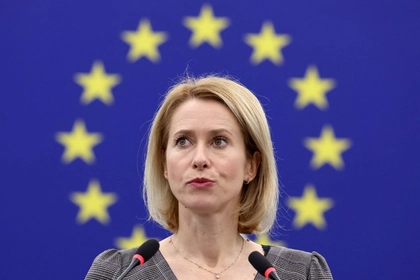Ukrainian companies launched biomethane export to the EU on Feb. 6 and have announced plans to expand production by launching five new plants.
Pioneering the export launch, two Ukrainian agricultural companies, Vitagro and Hals Agro, expect to generate €2.6–2.7 million ($2.7-2.8 million) in revenue this year, Forbes Ukraine reported.
JOIN US ON TELEGRAM
Follow our coverage of the war on the @Kyivpost_official.
Meanwhile, the Teofipol Energy Company reportedly plans to build a plant that can produce 56 million cubic meters of biomethane annually. The company plans to start production in December, legal department director Oleksii Lysiuky told Forbes Ukraine.
According to Forbes, Ukrainian agro-industrial holding Vitagro plans to build two additional plants with a total capacity of 8 million cubic meters.
If all facilities operate at full capacity in 2025, Ukraine could export around 110 million cubic meters of biomethane, valued at €94-100 million ($97.2-103.5 million), Forbes wrote, referring to the Bioenergy Association of Ukraine analysis.
Ukrainian holding company OKKO Group, which operates one of the country’s largest networks of filling stations, will also reportedly begin construction of a large biomethane plant next year, which it plans to launch in the first half of the following year.
Ukraine has enough agricultural waste to produce up to 20 billion cubic meters of biomethane annually, сhairman of the Board of the Bioenergy Association of Ukraine Heorhii Heletukha told Forbes Ukraine.

‘A Beacon of Democracy’ – EU Looks to Resume Funding for RFE
European demand is strong, but the key challenge is establishing pipeline exports, Yuriy Kubrushko, a partner at consulting firm Imepower, told the media outlet.
“For the market to develop, there must be a successful first case,” Forbes Ukraine quotes Kubrushko.
How Ukraine started producing and selling biomethane
The European Union aims to produce 35 billion cubic meters of biomethane annually by 2030 but currently only produces 15 billion cubic meters. According to Forbes, this scarcity creates opportunities for external suppliers, including Ukraine.
In February 2023, Ukrainian Prime Minister Denys Shmyhal and European Commission President Ursula von der Leyen signed a memorandum on strategic cooperation in biomethane and synthetic gases. Two months later, Ukrainian agricultural holding Hals Agro launched Ukraine’s first biomethane plant, Forbes Ukraine wrote.

However, in February 2024, the company suspended production. Natural gas exports were restricted due to Russia’s war in Ukraine, and selling biomethane domestically was unprofitable.
Production costs range from €600 to €900 ($620-930) per 1,000 cubic meters, while the domestic gas price in Ukraine is about €350 ($362).
By late 2024, Vitagro and Hals Agro restarted biomethane production. In 2023, Vitagro built a €6 million ($6.2 million) plant in the western Ukrainian city of Khmelnytsky with a capacity of 3 million cubic meters per year. The company began injecting biomethane into the gas grid in October 2024, with Hals Agro following suit in November.
In March 2024, Ukraine’s parliament, the Verkhovna Rada, clarified customs regulations for biomethane exports.
The next obstacle was connecting producers to the gas network, a process that varied by region and caused months-long delays. But by November 2024, the national energy regulator approved standardized connection procedures.
Pipeline exports only became possible in February 2025 after several months of grid integration.
Biomethane market potential and prices
European biomethane prices reflect both the market rate for natural gas and government incentives for CO2 reduction.
In 2022, European gas prices exceeded €1,000 ($1,034) per 1,000 cubic meters. By early 2025, they range from €400 to €500 ($413-517). CO2 subsidies can push biomethane prices to €850-900 ($880-931).
If Vitagro and Hals Agro sell biomethane at these prices, each company could generate €2.6-2.7 million in revenue in 2025. However, prices vary by country, feedstock, and contract terms.
Germany mandates biomethane use in freight transport, increasing demand for bio-LNG made from manure or poultry waste, which significantly reduces CO2 emissions. Long-term contracts provide stability, while spot market sales offer higher prices with increased risk.
You can also highlight the text and press Ctrl + Enter











